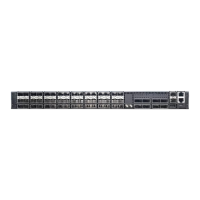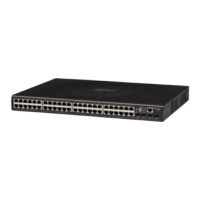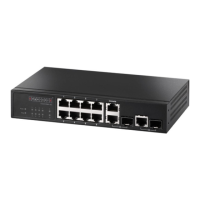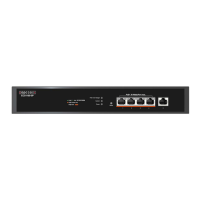Chapter 29
| IP Routing Commands
Open Shortest Path First (OSPFv3)
– 892 –
adequate flow of routing information, but does not produce unnecessary
protocol traffic. However, note that this value should be larger for virtual
links. (Range: 1-65535 seconds; Default: 5 seconds)
transmit-delay seconds - Estimates the time required to send a link-state
update packet over the virtual link, considering the transmission and
propagation delays. LSAs have their age incremented by this amount
before transmission. This value must be the same for all routers attached to
an autonomous system. (Range: 1-65535 seconds; Default: 1 second)
Command Mode
Router Configuration
Default Setting
area-id: None
router-id: None
hello-interval: 10 seconds
retransmit-interval: 5 seconds
transmit-delay: 1 second
dead-interval: 40 seconds
Command Usage
◆ All areas must be connected to a backbone area (0.0.0.0) to maintain routing
connectivity throughout the autonomous system. If it not possible to physically
connect an area to the backbone, you can use a virtual link. A virtual link can
provide a logical path to the backbone for an isolated area, or can be
configured as a backup connection that can take over if the normal connection
to the backbone fails.
◆ A virtual link can be configured between any two backbone routers that have
an interface to a common non-backbone area. The two routers joined by a
virtual link are treated as if they were connected by an unnumbered point-to-
point network.
◆ Any area disconnected from the backbone must include the transit area ID and
the router ID for a virtual link neighbor that is adjacent to the backbone.
Example
This example creates a virtual link using the defaults for all optional parameters.
Console(config-router)#area 3 virtual-link 192.168.0.9
Console(config-router)#
